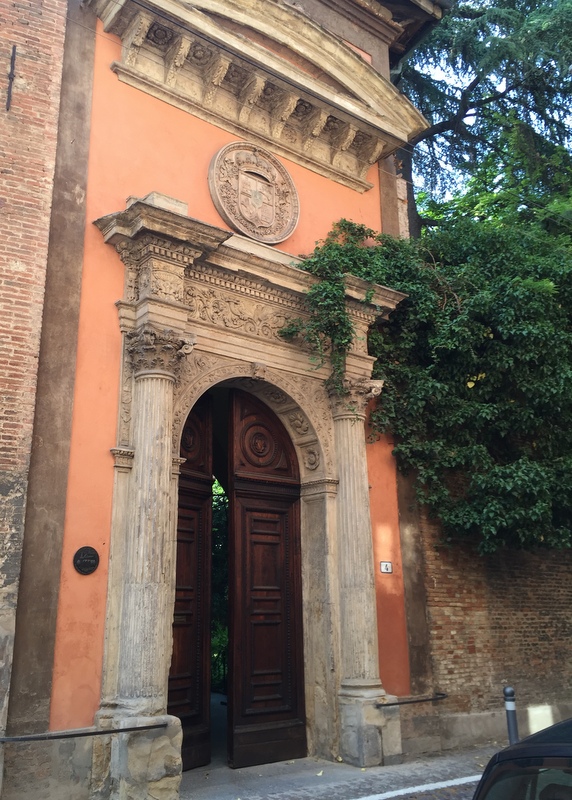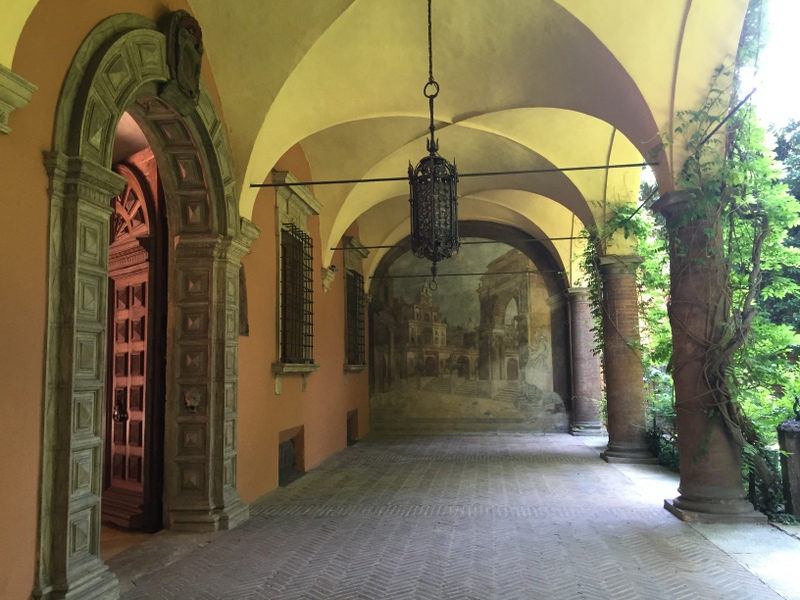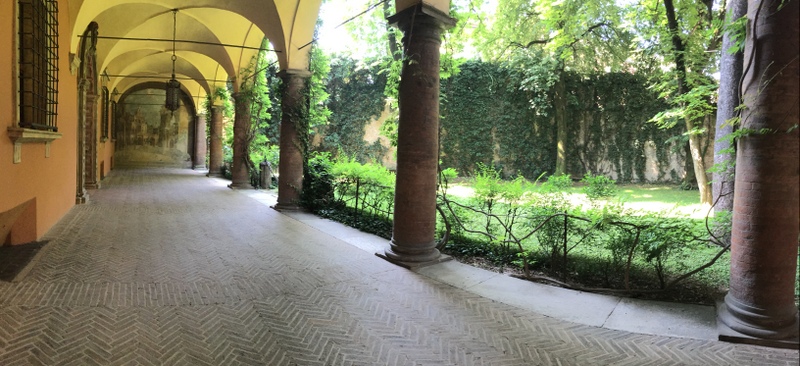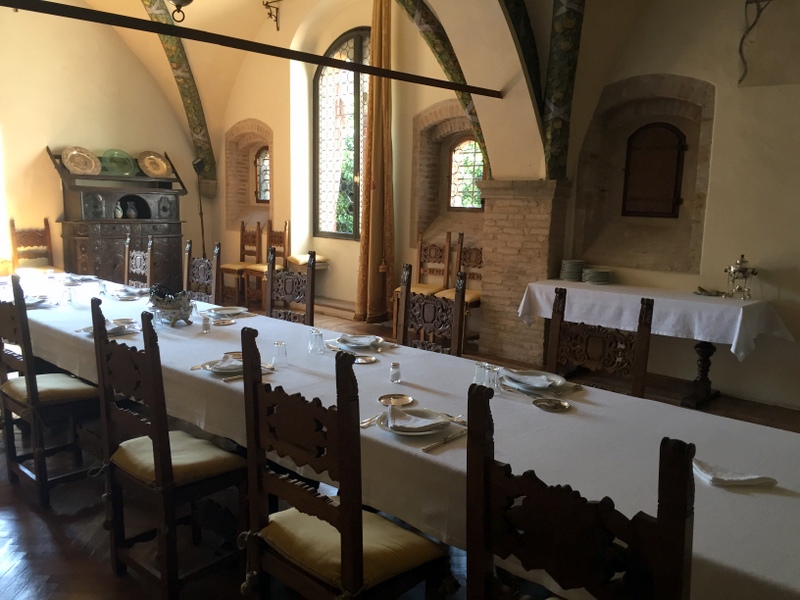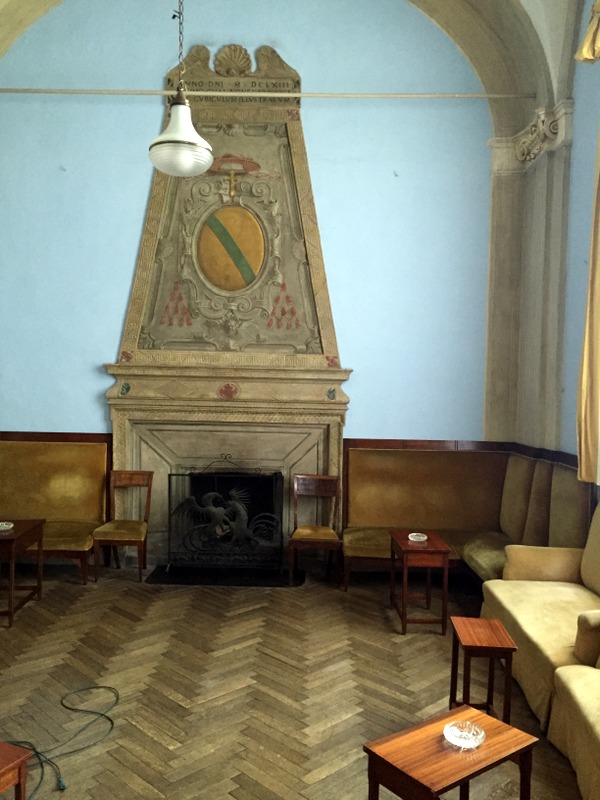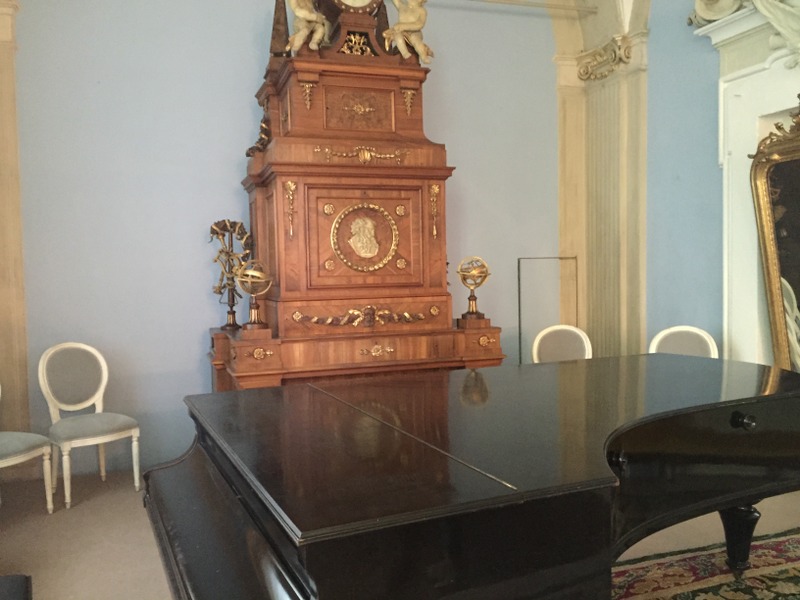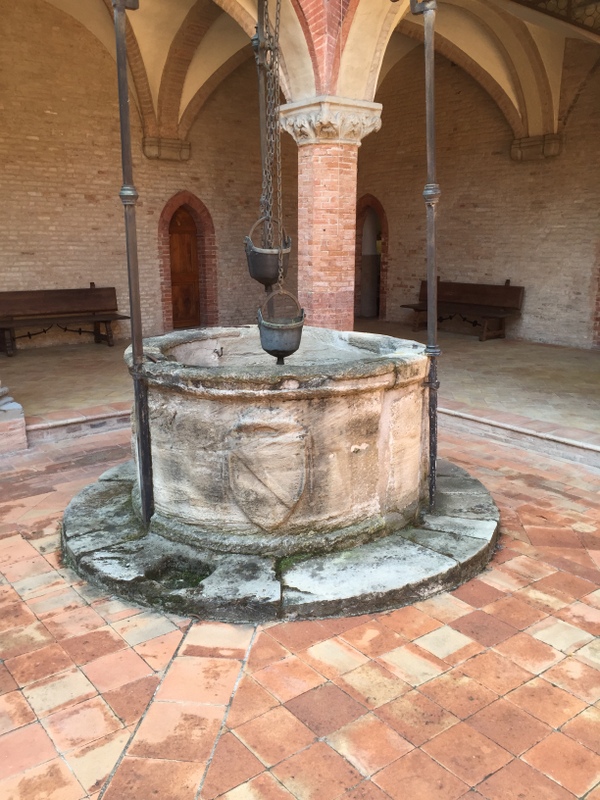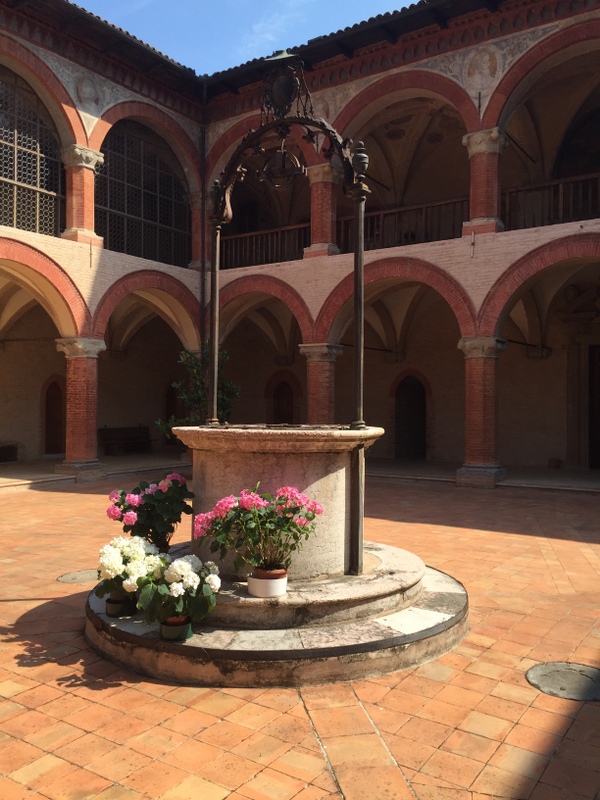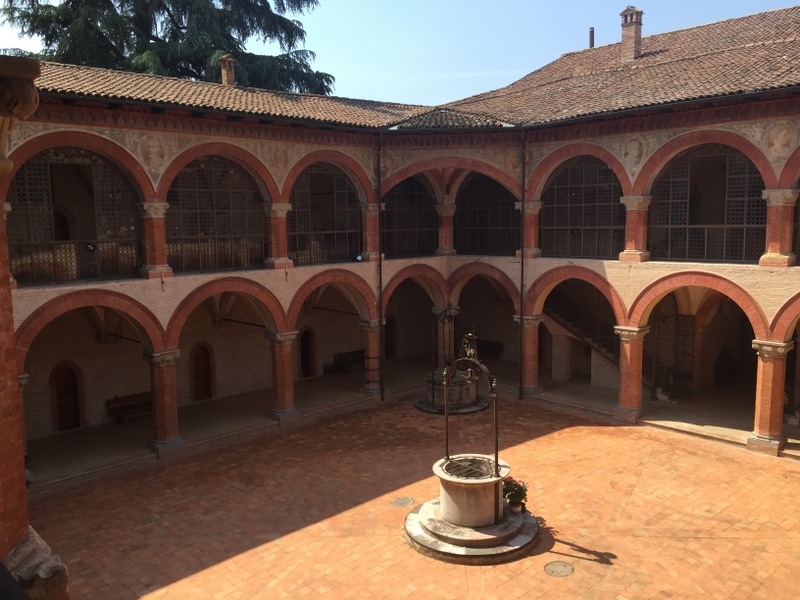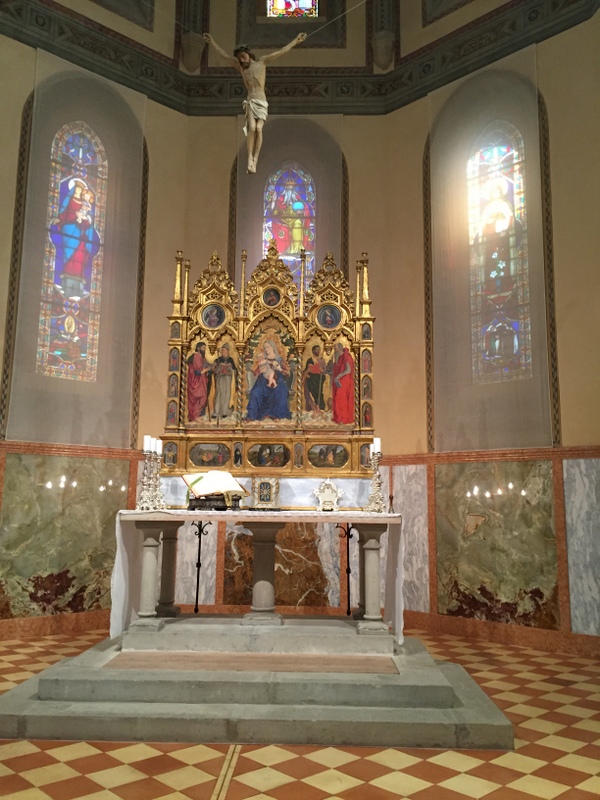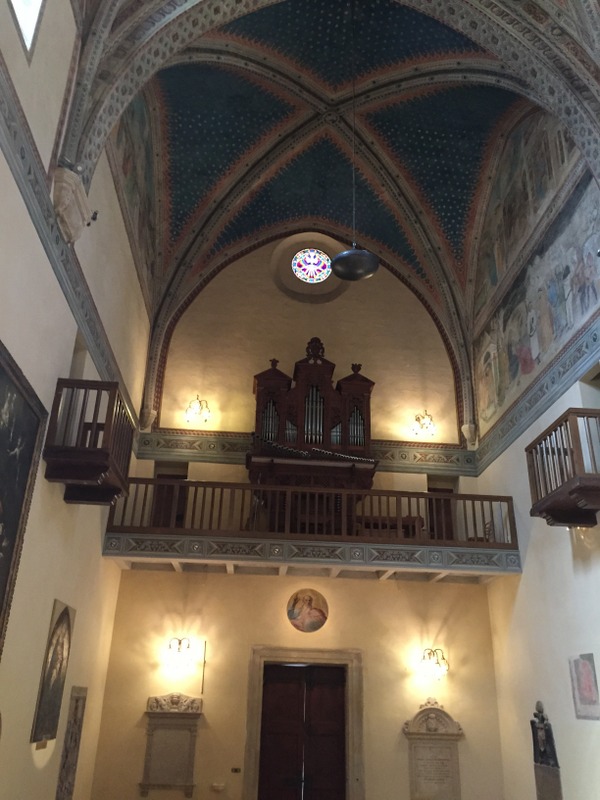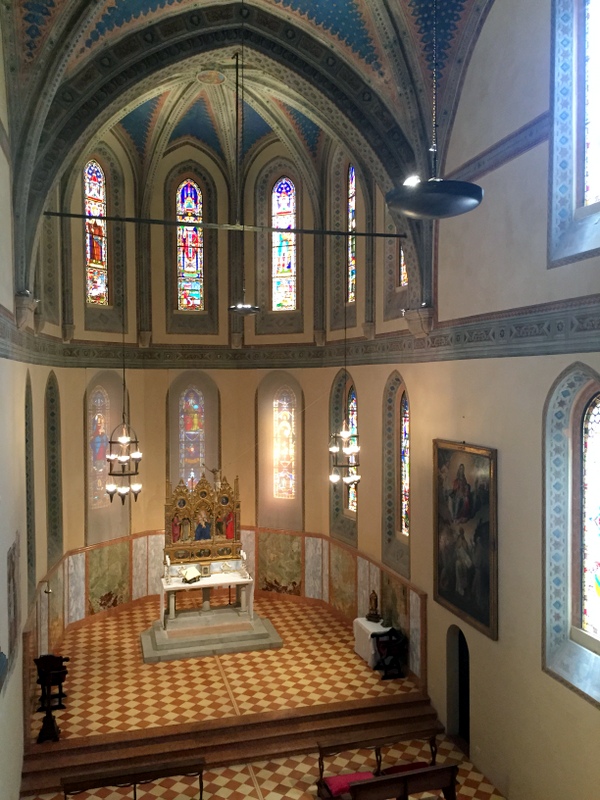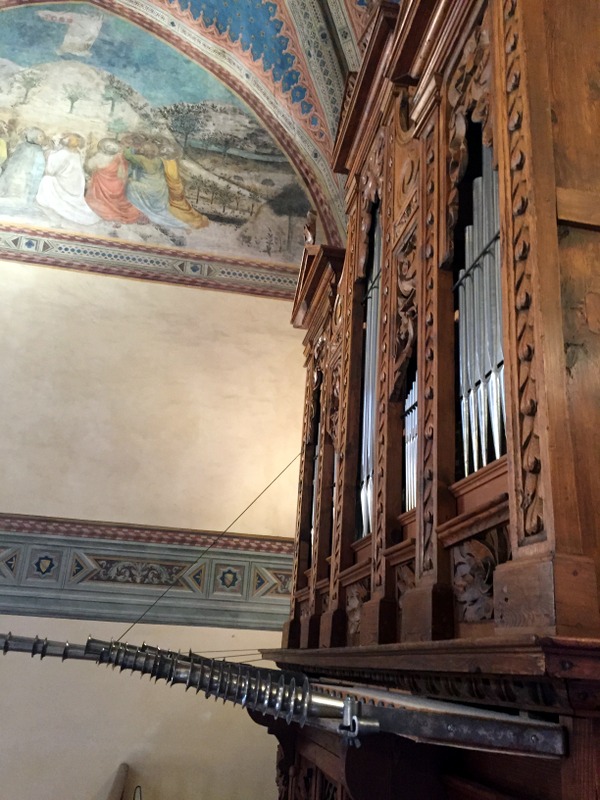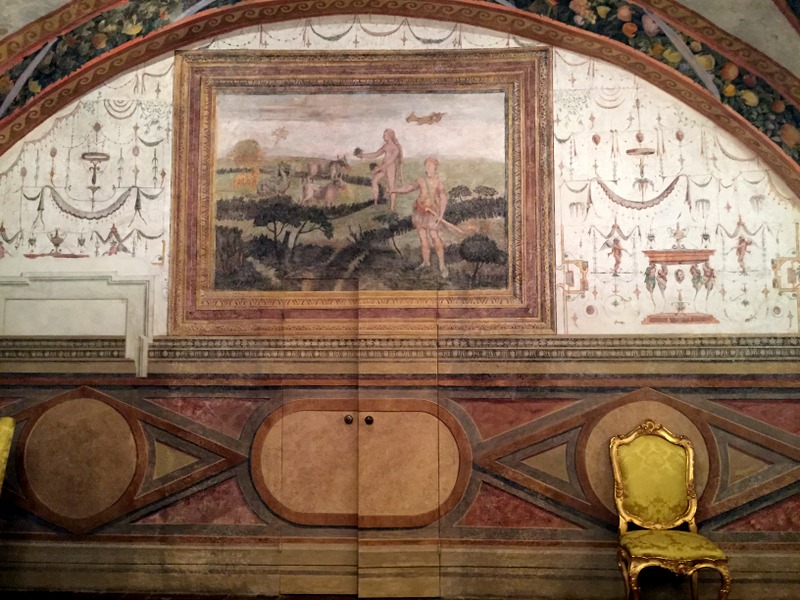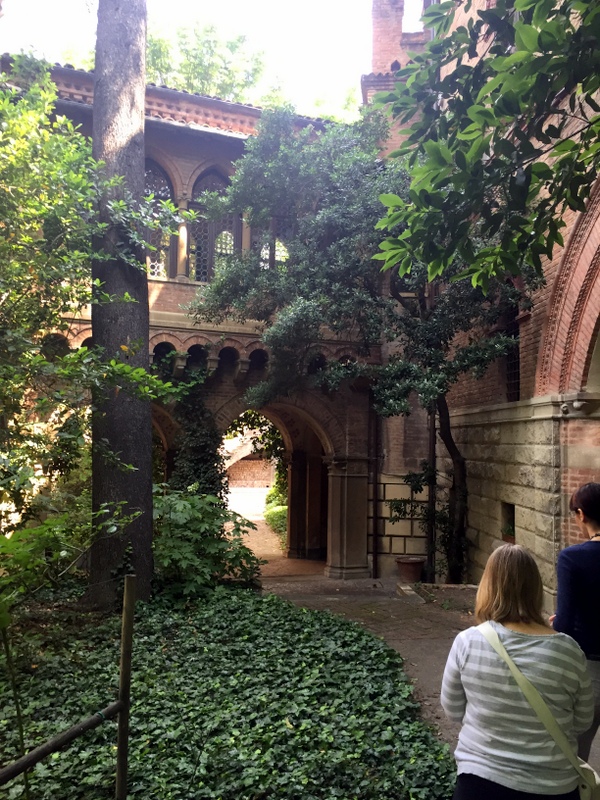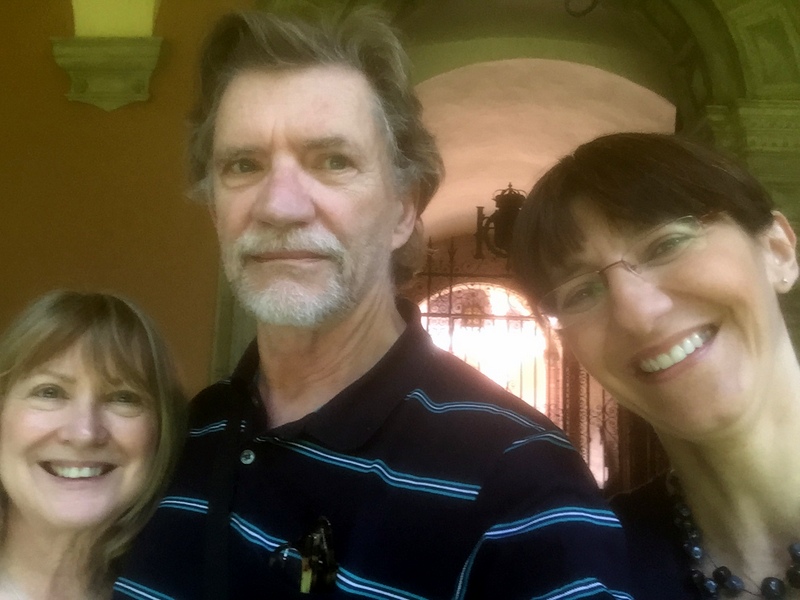Collegio di Spagna
Wednesday, June 17th, 2015
I had seen this building often since I have routinely taken a bus to and from the center of town that runs along via Saragozza. At a point there is an intersection where via Saragozza and via Collegio di Spagna come together at an angle. That is exactly where the collegio is located. While I thought that the collegio was a “collegeâ€, that is post high school (liceo in italian) education, that turns out to be wrong. It was founded in 1364 by the spanish as a residence for high achieving students to study at the University of Bologna which was already about 270 years old at that point.
I had never been inside the building until this year but had a truly special opportunity to have a fantastic tour of the building due to Antonella. Antonella (or her mother) is the owner of the apartment where we stayed in Bologna and works at the collegio. She offered to give us a private tour of the magnificent building and we met her there on the Saturday morning before leaving Italy. Of course going on the tour we needed to leave Italy since the building is formally not a part of Italy. I’m not totally clear on this but it may not be considered part of Spain or the Catholic church either – it’s a completely independent entity. It houses a maximum of 22 students who now study for advanced degrees, mostly in law at the University of Bologna. Currently there are only 10 students living there but generally Antonella said that there are an average of 16 and the remaining rooms serve as guest rooms for visitors.
The collegio has kept meticulous records. If you were a researcher you could find out who painted that painting in one of the rooms, say 600 years ago, and how much he was paid for the effort. Also there are complete records of every student that has ever lived there. Oh, and by the way, all of the students are male. Perhaps this is due to when it was founded and higher education was primarily reserved for men, perhaps it was because of the attitudes of the church and perhaps it was to avoid, well, distractions. I am also assuming that all of the students are spanish but perhaps Antonella will correct me. The collegio is self-supporting. I’m not certain but believe that parts of the building, perhaps added later, are not part of the collegio proper and are rented out as offices (lots of lawyers) and the rents support all of the activities.
It was quite a tour and one of those special serendipitous things that make a trip really special.
